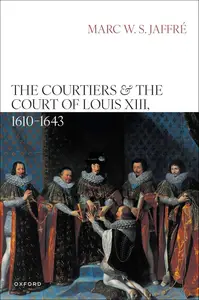The Courtiers and the Court of Louis XIII, 1610–1643 by Marc W. S. Jaffré
English | July 17, 2025 | ISBN: 0198957610 | True EPUB/PDF | 384 pages | 26.7/12.3 MB
English | July 17, 2025 | ISBN: 0198957610 | True EPUB/PDF | 384 pages | 26.7/12.3 MB
Louis XIII's court has long been a fixture of popular culture, thanks in part to the many movie and TV adaptations of Alexandre Dumas's novel, The Three Musketeers. Yet it remains misunderstood, commonly mischaracterized as unimportant, or wholly subservient to the whims of Cardinal Richelieu.
Seeking to correct this narrative, Marc W. S. Jaffré here offers a comprehensive analysis of the court's institutional, political, social, cultural, ceremonial, and financial development, emphasizing its very wide range of active participants, from the nobility, financiers, merchants, to lower ranking household members. The close study engages with the key issues of Louis's reign: the destabilizing role of the minister-favourite, Cardinal Richelieu; the turbulent family dynamics that led Louis to wage wars against his mother, his brother, and his cousins; the backdrop of war, both with the Huguenots and within the context of the Thirty Years War; and the rise of salon culture.
In so doing, the court is shown to be a central, vibrant, and misunderstood element of early modern French history and culture. Courtiers, artisans, merchants, and financiers, among others, are shown to have played key roles in shaping the institutional, political, cultural, economic, and military framework of the court, and Louis XIII's reign more generally. In challenging the top-down paradigm prevalent in court studies, this monograph provides crucial correctives to the existing narrative that Louis XIII's court was weak or unimportant and simultaneously revises how early modern courts and their development have been understood historiographically.



